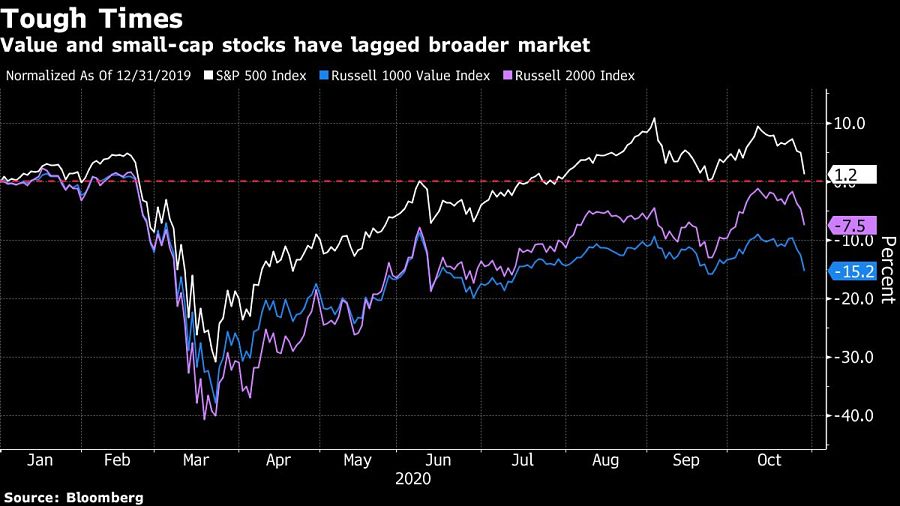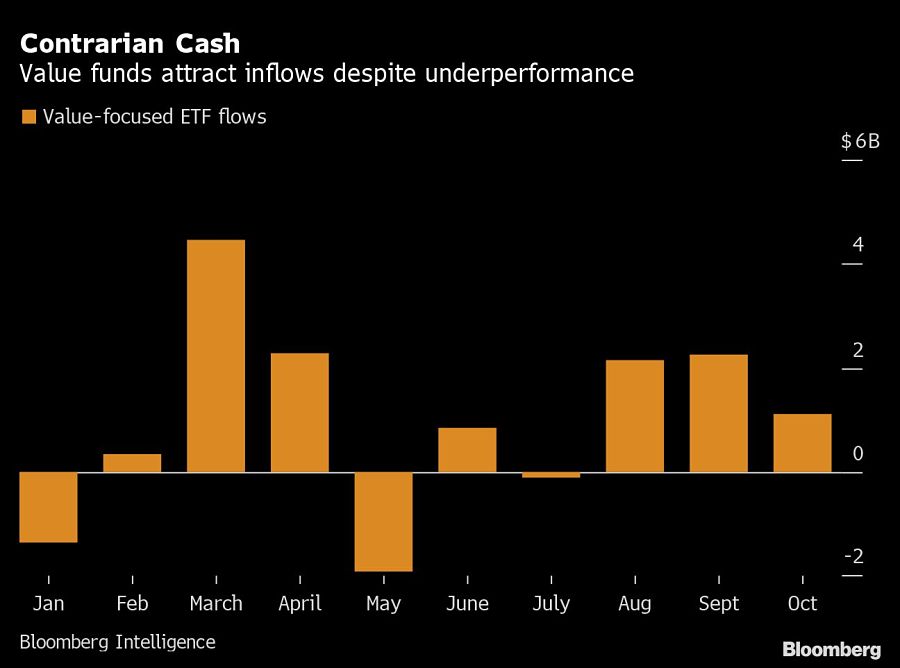

Few things divide opinion on Wall Street like the outlook for small-cap stocks or the fate of the value strategy. Yet most market players would probably agree that it’s a tough time to launch a product combining the two.
That’s exactly what BlackRock Inc. is doing with a new exchange-traded fund.
The iShares Factors US Small Cap Value ETF began trading on the New York Stock Exchange under the ticker SVAL Thursday. The fund screens for value-oriented stocks in the Russell 2000 Index based on liquidity, volatility, leverage and analyst sentiment and then weights securities equally.

It’s an eye-catching arrival given the backdrop. Small-cap shares and value strategies have been battered anew this year as the coronavirus sparked an economic crisis. U.S. equities endured yet another bout of volatility this week, a broad sell-off that has spared few sectors.
Even after those declines, the S&P 500 Index still gained 1.2% in the year through Wednesday. The Russell 2000 Index, by contrast, was roughly 7.5% lower, and value stocks -- those that look cheap relative to fundamentals -- were down more than 15%.
BlackRock’s existing value-focused ETFs tend to be weighted toward large and mid-cap companies, whereas SVAL will be its first small-cap value single-factor fund, according to the company’s U.S. head of factor ETFs.
“On a forward-looking basis, the future is much brighter than it has been the past few years and we wanted to make sure our lineup has all the exposure our clients are looking for,” Bob Hum said in an interview.
The renaissance of value has eluded investors for years, though there have been plenty of head-fakes in the past few months.
The Russell 1000 Value Index beat its growth counterpart by over 2 percentage points in September for its biggest month of outperformance in a year. On a five-year basis, however, value has trailed growth by nearly 93 percentage points.
Meanwhile, large-cap companies -- led by a handful of technology names -- have trounced small-cap shares over that time period. The S&P 500 has climbed nearly 57% since late 2015, while the Russell 2000 gained about 32%.
Still, Hum expects SVAL to attract interest once economies start to reopen broadly. He points to recent demand for value and small-cap funds.
“Many investors are looking for opportunities that are contrarian to the recent euphoria surrounding mega cap growth stocks,” he said in an email.

In defiance of the lackluster performance, value-focused ETFs have attracted about $10 billion of inflows so far in 2020, according to data compiled by Bloomberg. Small-cap equity ETFs have absorbed $530 million.
[More: First blank-check ETF debuts]

The 25-year industry veteran previously in charge of the Wall Street bank's advisor recruitment efforts is now fulfilling a similar role at a rival firm.

Former Northwestern Mutual advisors join firm for independence.

Executives from LPL Financial, Cresset Partners hired for key roles.

Geopolitical tension has been managed well by the markets.

December cut is still a possiblity.
Streamline your outreach with Aidentified's AI-driven solutions
This season’s market volatility: Positioning for rate relief, income growth and the AI rebound
